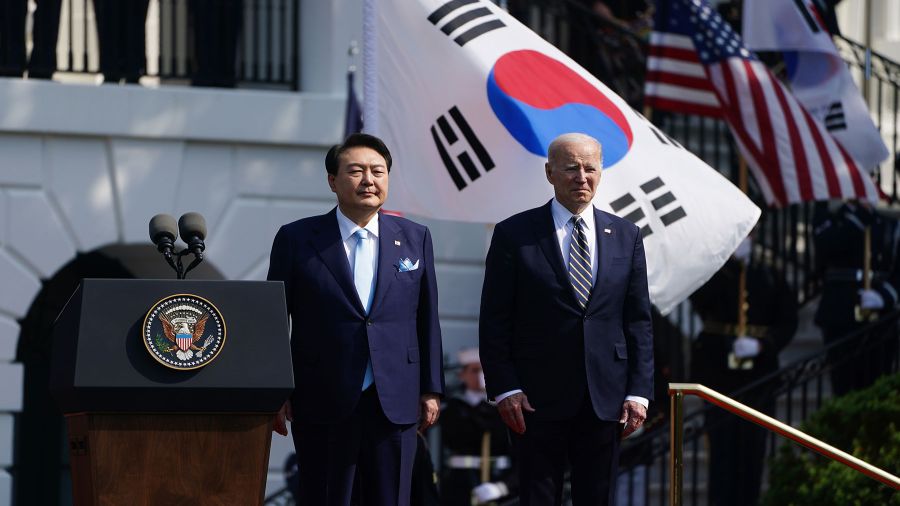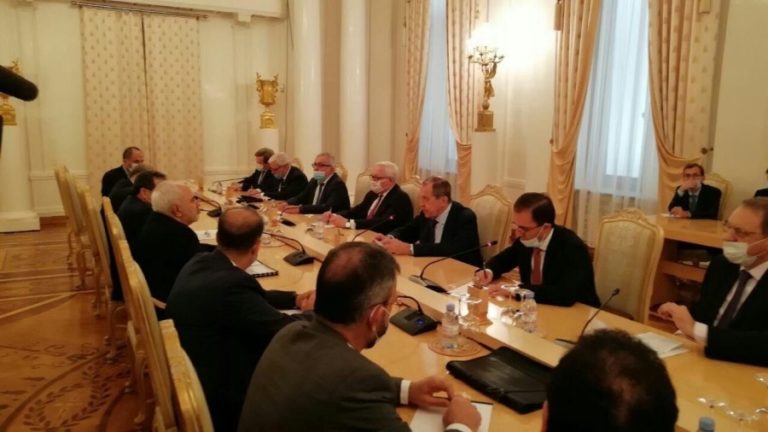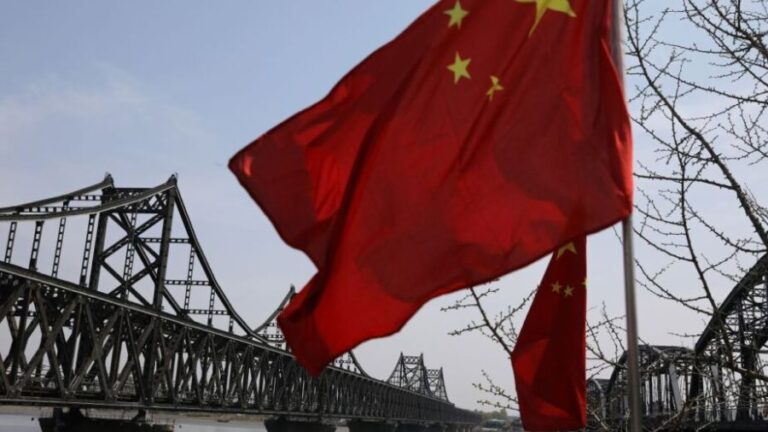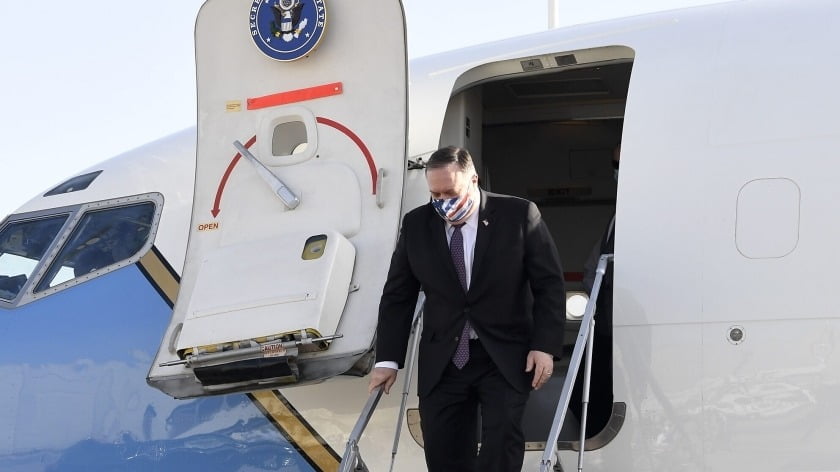The President of the ROK’s Visit to the US: An Analysis of Key Documents and Statements Part 1. The Washington Declaration
Having described the course of the visit, let’s move on to a more in-depth analysis of the main statements, which include the joint statement of the two presidents on the results of the summit, speech by Yoon Suk-yeol in Congress, and partly his speech at Harvard, where he developed some of the theses expressed earlier.
The main document of the summit is the so-called Washington Declaration, which we start with.
The 70-year defense alliance between the United States and the Republic of Korea is mentioned in the opening few sentences of the text. “What began as a security partnership has grown and expanded into a truly global Alliance that champions democratic principles, enriches economic cooperation, and drives technological advancements.” As a follow-up to this trend, “President Biden and President Yoon have committed themselves to develop an ever-stronger mutual defense relationship and affirm in the strongest words possible their commitment to the combined defense posture under the U.S.-ROK Mutual Defense Treaty.” And during his Harvard speech, Yoon bluntly said about the Washington Declaration that “We’re now in a situation where the 1953 Mutual Defense Treaty based on conventional weapons has to be upgraded to the concept of South Korea-U.S. mutual defense that includes nuclear weapons.”
However, immediately we see a very interesting passage, “The ROK has full confidence in U.S. extended deterrence commitments and recognizes the importance, necessity, and benefit of its enduring reliance on the U.S. nuclear deterrent”, and further states that “President Yoon reaffirmed the ROK’s longstanding commitment to its obligations under the Nuclear Nonproliferation Treaty as the cornerstone of the global nonproliferation regime as well as to the U.S.-ROK Agreement for Cooperation Concerning Peaceful Uses of Nuclear Energy.” This wording of the declaration looks like Washington was able to dissuade Seoul from the idea of creating its own nuclear bomb. In 2023, this concept became completely demarginalized – systemic politicians started talking about the need to contain the North Korean bomb with their own, and moreover, according to a survey conducted on April 20-21, 2023 by Realmeter, 56.5% of South Koreans believe that the ROK should get its own nuclear weapons while only 3.3% hope for the US nuclear umbrella. Other, more biased reports bring the number of supporters of “ROK’s own bomb” to 76.6%.
But the nuclear ROK irrevocably destroys the non-proliferation regime and becomes more independent from the United States, so as a result, the creation of its own nuclear program is put on hold. Yoon Suk-yeol elaborated on this point in his Harvard speech, saying, “If the Republic of Korea decides to arm itself with nuclear weapons, we have the technical base to do it within a short period of time, even within a year… However, acquiring nuclear weapons is about more than just technological capabilities; it is also about a “complicated political and economic equation. There are various values and interests we have to give up if we possess nuclear weapons.“
Of course, “The United States commits to make every effort to consult with the ROK on any possible nuclear weapons employment on the Korean Peninsula,” although such wording can be regarded as “we will try to keep you informed, but if something happens, we will do as we see fit.” Nevertheless, to “strengthen extended deterrence, discuss nuclear and strategic planning, and manage the threat to the nonproliferation regime,” a Nuclear Consultative Group (NCG) will be created, the niche of which is comparable to a similar US-NATO group (a mechanism for regular bilateral consultations on nuclear and strategic planning). The group will be headed by officials at the level of deputy ministers, and it will meet on a quarterly basis, reporting on the results of its meetings to the respective presidents.
The nomenclature of exercises with “nuclear deterrence” training will increase, the first sign of which will be the dispatch of an Ohio-class nuclear submarine to the Republic of Korea with nuclear ballistic missiles on board, occurring for the first time in more than 40 years. “Going forward, the United States will further enhance the regular visibility of strategic assets to the Korean Peninsula.”
Russian and other media outlets drew attention to Biden’s statements that “the United States’ commitment to the ROK and the Korean people is enduring and ironclad, and that any nuclear attack by the DPRK against the ROK will be met with a swift, overwhelming, and decisive response.” Yet Trump, Obama, and even Clinton have made pathetic statements that an attack by the North on the South, especially a nuclear attack, would be met with “fire and fury” and end with the DPRK being wiped off the world map. The words were different, but the point was the same.
Otherwise, Joe Biden “highlighted that the U.S. commitment to extended deterrence to the ROK is backed by the full range of U.S. capabilities, including nuclear,” and Yoon Suk-yeol “affirmed that the ROK would apply the full range of its capabilities to the Alliance’s combined defense posture.” Lest it sound too belligerent, the presidents concluded by pointing out that they “remain steadfast in their pursuit of dialogue and diplomacy with the DPRK, without preconditions.” However, the overall goal was to “achieve the complete denuclearization of the Korean Peninsula,” which, from the author’s point of view, is only possible if there is regime change: the DPRK’s new nuclear regulations strictly oppose any deal aimed at limiting the growth of North Korean nuclear deterrent forces.
The text of the declaration evokes mixed feelings. Of course, its consequences will significantly increase tensions in the region and spur an arms race, but these are quantitative rather than qualitative changes. The fact that the US will enhance the regular visibility of strategic assets means that US strategic weapons capable of carrying nuclear weapons (aircraft, submarines and ships) will visit the peninsula more often, but not stay there permanently. There are no plans to deploy US tactical nuclear weapons on South Korean territory.
In fact, the declaration consolidated the trends that had already been clear. In case the North attacks, the United States will try to defend the South by all means. Recall that not so long ago the United States sent the nuclear attack submarine USS Springfield and the aircraft carrier USS Nimitz to the region as a display of force; the only difference is that now we know for sure that there are nuclear weapons on board. What is unique is that new structures are being established as a result of this, and it is important recalling what the ROK media said about the outlines of deterrence before to the visit.
For instance, the right-wing conservative Chosun Ilbo noted that “Yoon must bring at least one thing back home — reliable countermeasures to defend the country and people against the North’s missile attacks.” According to the newspaper, North Korea’s nuclear capabilities have grown to a level that is problematic even for the United States, and meanwhile, while the 1961 Treaty of Friendship, Cooperation and Mutual Assistance between North Korea and China provides for automatic intervention by either side in the event of an attack on the other, the South Korea-US Mutual Defense Treaty has no such clause. So, “if our nuclear development, the redeployment of U.S. tactical weapons, and our reprocessing of the spent fuel are difficult to achieve, our president must find alternatives.”
In this context, the right-wing camp has already criticized the results of the visit – they have not given clear guarantees that the United States will strike the North with nuclear weapons, and the nuclear umbrella is not wide enough. At the height of the Cold War in the late 1970s, US submarines with nuclear ballistic missiles occasionally called at South Korean ports, two to three times a month, despite the fact that the US had hundreds of nuclear warheads located in South Korea. But in 1991, the United States withdrew all of its nuclear weapons from the Korean Peninsula, and the following year, Seoul and Pyongyang signed a joint declaration pledging that neither side would “test, manufacture, receive, possess, store, deploy, or use nuclear weapons.” Perhaps in this context, even before the declaration was signed, one of the Biden administration officials, according to the Associated Press agency, warned it is “crystal clear” that there are no plans by the administration for “returning tactical or any other kind of nuclear weapons to the Korean Peninsula.”







